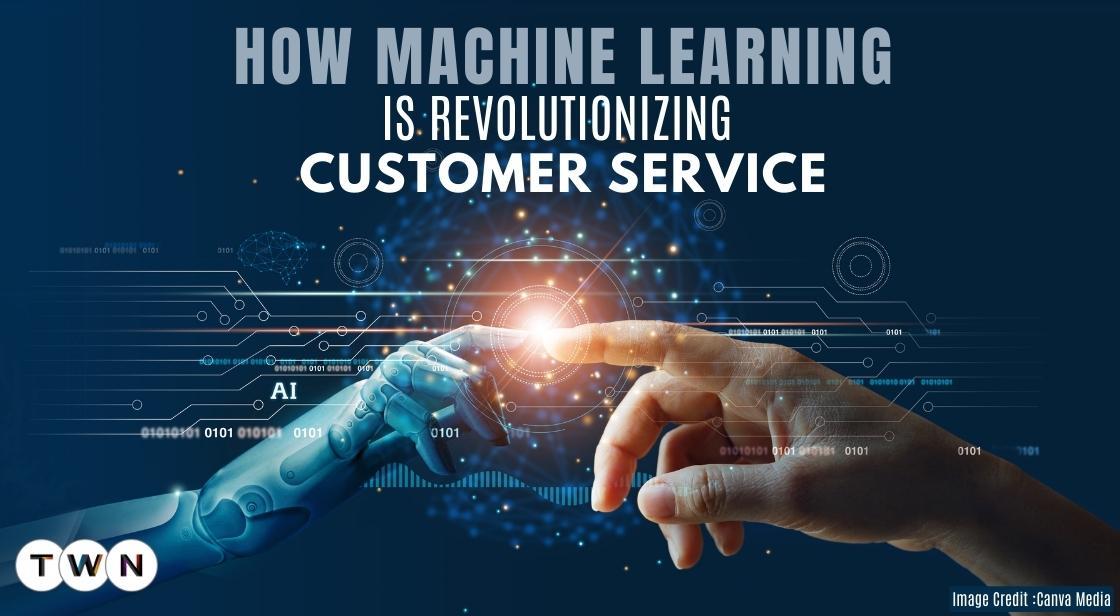How Machine Learning Is Revolutionizing The Way We Deliver Customer Service

Blog Post
Machine learning (ML) is a type of artificial intelligence that allows computer systems to learn and improve from data without being explicitly programmed. By analyzing data patterns, ML algorithms can make predictions and decisions that are highly accurate and personalized. In recent years, machine learning has been increasingly adopted by businesses to enhance the customer experience. This article will discuss the various ways in which machine learning can be leveraged to improve customer experience, and how businesses can implement ML solutions effectively.
Machine learning is revolutionizing the way businesses interact with customers. By leveraging ML algorithms, businesses can gain insights into customer behavior and preferences that were previously unavailable. This allows businesses to provide a more personalized and seamless customer experience across all touchpoints, from the initial search to the final purchase.
One of the main advantages of machine learning is its ability to process large amounts of data quickly and accurately. By analyzing data from multiple sources, including social media, customer reviews, and transaction histories, machine learning algorithms can identify patterns and trends that can inform business decisions.
The advantage of machine learning is its ability to make predictions and decisions in real-time. For example, machine learning algorithms can predict which products a customer is most likely to purchase based on their browsing and purchasing history, and then recommend those products in real-time. This not only improves the customer experience but can also increase sales and revenue.
There are many ways in which businesses can use machine learning to improve the customer experience. For example, businesses can use ML algorithms to personalize web content, provide real-time recommendations, optimize pricing, and detect fraud. By automating these tasks, businesses can free up their staff to focus on more complex customer queries and issues.
However, implementing machine learning solutions effectively can be challenging. Businesses must have the right data infrastructure in place to collect, store, and analyze customer data. They must also have the expertise to develop and deploy ML algorithms that are tailored to their specific business needs.
Machine learning has the potential to transform the customer experience by providing personalized and seamless interactions across all touchpoints. Businesses that adopt ML solutions effectively can gain a competitive advantage, improve customer satisfaction, and drive growth. However, implementing machine learning solutions requires careful planning and execution, and businesses must be prepared to invest in the necessary data infrastructure and expertise.
How Machine Learning Is Revolutionizing The Way We Deliver Customer Service
1. Personalization:
Machine learning algorithms can be used to analyze customer data and behavior to personalize the customer experience. This includes personalized recommendations, targeted promotions, and tailored messaging. By understanding the unique preferences of individual customers, businesses can deliver a more relevant and engaging experience, leading to higher customer satisfaction and loyalty.
2. Chatbots:
Chatbots powered by machine learning algorithms can provide customers with immediate assistance and support. These bots can understand natural language and can answer customer queries, resolve issues, and even process transactions. By automating routine tasks and providing instant customer service, chatbots can improve customer satisfaction and reduce wait times.
3. Predictive analytics:
Machine learning algorithms can be used to analyze customer data and predict future behavior. This includes predicting customer churn, identifying high-value customers, and forecasting demand. By using predictive analytics, businesses can proactively address customer needs, reduce customer churn, and optimize marketing efforts.
4. Sentiment analysis:
Machine learning algorithms can analyze customer feedback and sentiment to gauge customer satisfaction levels. By monitoring social media channels, review sites, and customer feedback forms, businesses can quickly identify customer pain points and address them in a timely manner. This leads to higher customer satisfaction and loyalty.
Also Read: Why GPT-4 is The Future of Language Models-A Comparison with ChatGPT
5. Fraud detection:
Machine learning algorithms can be used to detect fraudulent activities in real-time. By analyzing transaction patterns and customer behavior, ML algorithms can quickly identify anomalies and prevent fraudulent transactions. This not only reduces the risk of financial losses but also enhances customer trust and confidence.
6. Recommendation engines:
Machine learning algorithms can analyze customer data and behavior to provide personalized recommendations. This includes recommending products, services, and content that are relevant to the customer's interests and preferences. By providing relevant recommendations, businesses can increase customer engagement and loyalty.
7. Price optimization:
Machine learning algorithms can be used to optimize pricing strategies based on customer behavior and market trends. By analyzing historical data and real-time market trends, ML algorithms can adjust prices in real-time to maximize revenue and profitability. This leads to higher customer satisfaction and loyalty.
8. Voice assistants:
Machine learning algorithms can be used to power voice assistants that can understand natural language and provide personalized experiences. Voice assistants can help customers place orders, book appointments, get directions, and perform other tasks hands-free. By providing a seamless and convenient experience, voice assistants can improve customer satisfaction and loyalty.
9. Image recognition:
Machine learning algorithms can be used to analyze images to provide a more personalized experience. For example, image recognition can be used to identify customer preferences based on the products they browse, the images they upload, and the images they interact with. This can help businesses provide more personalized recommendations, product suggestions, and targeted promotions.
10. Supply chain optimization:
Machine learning algorithms can be used to optimize the supply chain by predicting demand, forecasting inventory levels, and optimizing shipping routes. By optimizing the supply chain, businesses can reduce costs, improve delivery times, and enhance the customer experience.
11. Customer segmentation:
Machine learning algorithms can be used to segment customers based on their behavior and preferences. By segmenting customers, businesses can provide targeted promotions and messaging that resonates with specific customer groups. This leads to higher engagement and conversion rates.
12. Real-time personalization:
Machine learning algorithms can be used to provide real-time personalization based on customer behavior and preferences. This includes customizing web content, product recommendations, and promotions based on customer data. By providing a personalized experience in real-time, businesses can improve customer satisfaction and increase sales.
13. Behavioral analytics:
Machine learning algorithms can be used to analyze customer behavior and identify patterns that are not visible to the human eye. This includes analyzing clickstreams, navigation paths, and browsing behavior. By analyzing behavioral data, businesses can gain insights into customer preferences and optimize their marketing efforts accordingly.
14. Customer lifetime value prediction:
Machine learning algorithms can be used to predict the lifetime value of a customer based on their behavior and purchase history. This includes predicting the likelihood of a customer to make repeat purchases, the total revenue they are likely to generate, and the cost of acquiring and retaining them. By predicting customer lifetime value, businesses can optimize their marketing and retention strategies to maximize revenue and profitability.
15. Hyper-personalization:
Machine learning algorithms can be used to provide hyper-personalized experiences that go beyond traditional personalization. This includes customizing every aspect of the customer journey, from the landing page to the checkout process. By providing a highly personalized experience, businesses can increase customer satisfaction and loyalty.
Conclusion:
Machine learning has the potential to revolutionize the customer experience by providing personalized and relevant experiences, automating routine tasks, and improving customer service. By leveraging machine learning algorithms effectively, businesses can improve customer satisfaction, reduce churn, and increase revenue. However, businesses must also ensure that they have the necessary infrastructure and data management capabilities to support machine learning solutions. With the right approach and investment, machine learning can help businesses stay ahead of the competition and drive growth in the long term.
You May Like
EDITOR’S CHOICE












